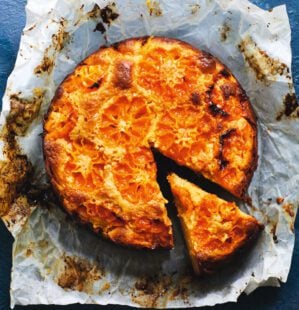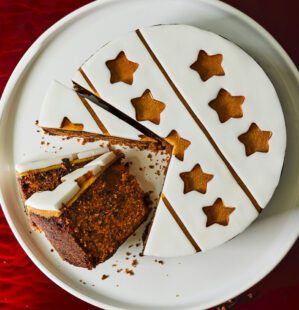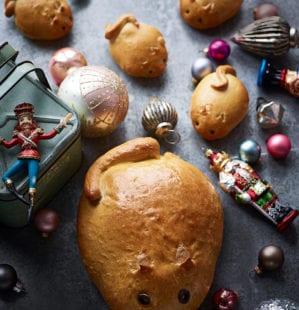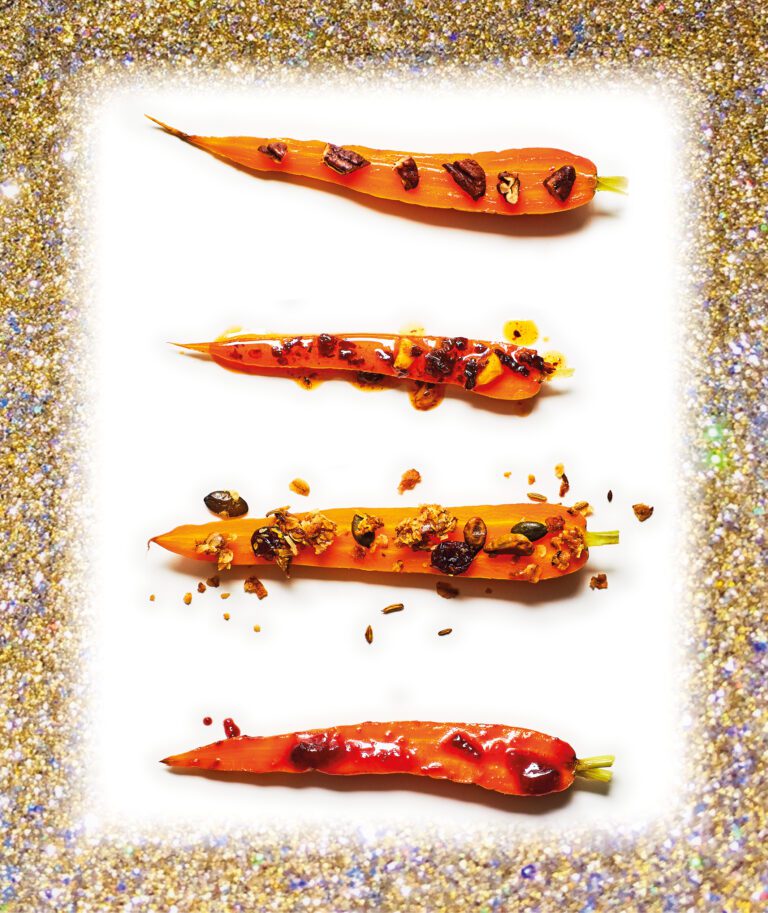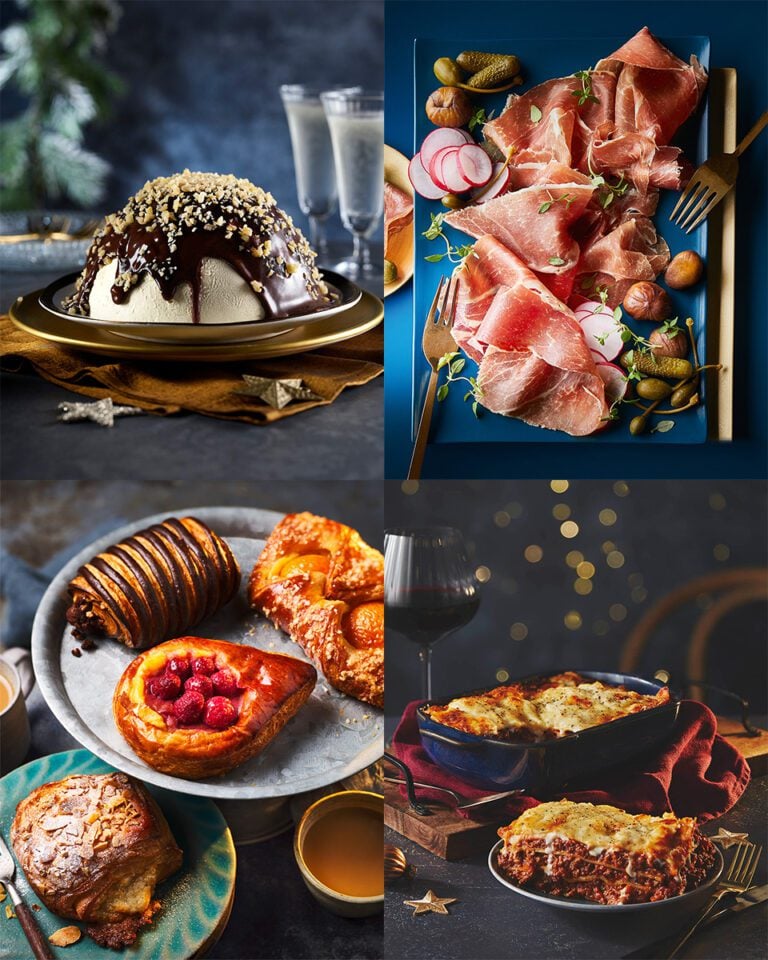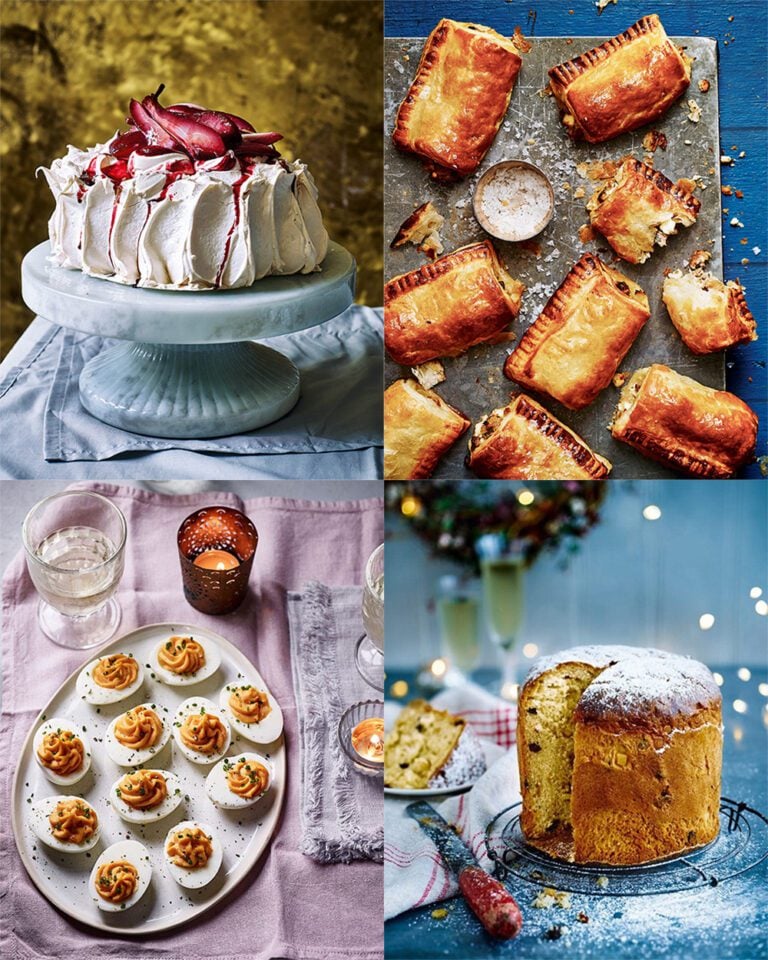Survive the Christmas drive! How to arrive with your festive food intact
This time of year invariably means a car journey or two to see family and friends – but if you’re travelling with food, getting it there intact can be daunting. Fear not! Our guide to the Christmas drive will have you singing that Chris Rea song in the car, knowing your cake, pudding or savoury dish is as secure as a bubble-wrapped safe wearing a high-vis jacket…
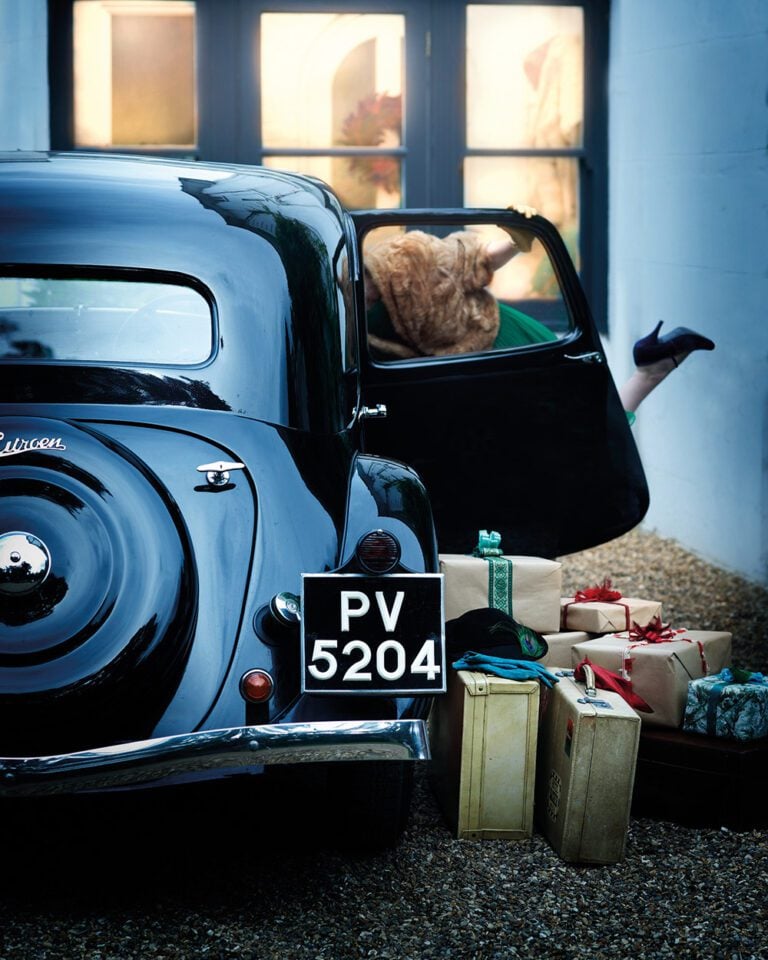
It’s happened to us. You’ve made a beautiful cake, two sponges delicately sandwiched together with piped buttercream, painstakingly decorated with precision, only for it to get smooshed into the side of its box when you go a little too fast taking the third exit on a roundabout. Domestic food logistics might not be the most glamorous of topics, but at Christmas – when we’d wager more homemade dishes get driven to other houses than at any other time of year – it’s a serious business.
With forward planning, however, and a focus on how to pack your precious cargo, the likes of victoria sponges or carefully curated cheeseboards can withstand even the roundabout gauntlet of Milton Keynes or the up-and-down backroads of rural Lancashire. Laugh in the face of Sussex’s potholes, take Cornish sharp turns with confidence, go off-road (within reason) with gusto – our guide will get you and your dish to your destination without so much as a drop of spilt milk to cry over.
The four keys to ensure your food survives the Christmas drive
1. Structural integrity
With luck you’ll have been given a vague brief for what to bring. Being asked for ‘a pudding’, ‘something snacky’ or ‘a salad’ makes things a lot easier than a specific request for pre-assembled millefeuille. Think about the density and sturdiness of your dish: what’s going to fall apart when exposed to a little turbulence?
From our experience, cakes are the most requested dish – and while a showstopping triple-tiered sponge cake with Italian meringue buttercream between each layer might look marvellous on your kitchen counter, by the time it’s been transported the vibrations of the engine will have deflated any whipped egg white, and hard braking will see the sponges slide out of place. Instead, go for something denser, such as our hazelnut, blood orange and chocolate cake. The flourless sponge is rich and moist but it doesn’t rely on a light, airy texture or anything whipped.
For savouries, dishes like pies and lasagnes, which can be kept in the vessel they’re cooked in, are perfect – tightly covered, there’s no room for them to move around in their container, and their dense structure ensures everything stays put. Bite-size things can be trickier, especially if they’re delicate, but if packed tight and relatively dry (pastry-based things like sausage rolls and cheese straws, for example), they should be okay.
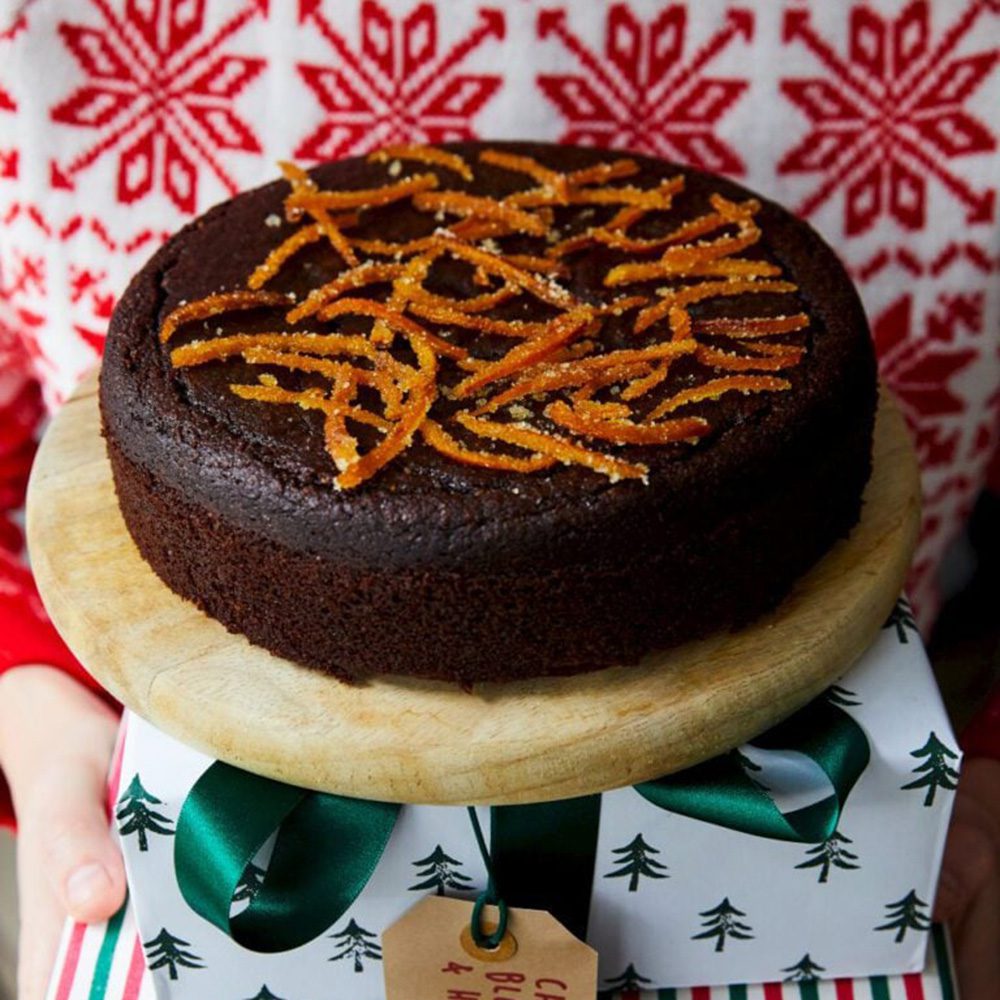
2. Packing prowess
If a dish has room to move about in whatever container it’s kept in, chances are it will as soon as you hit the road (or brake). Movement is the chief reason why food falls apart during transport. Sturdy dishes should always be packed tight, wrapped well and kept in a box or vessel the same size as the actual dish. For more delicate items it’s trickier: pack too tightly and they’ll end up getting squished or crushed before you even get them to the car. Tupperware or plastic containers are the best option, but choose one that’s only slightly bigger than your dish.
Then there’s stopping the box or container from moving about. If you have other boxes or luggage, wedge them in tight so they can’t move around in the boot. Use something grippy like a yoga mat to sit the box on, which will keep it in place better than the fabric seats in your car. Larger boxes can be stashed in the footwell, giving less room for movement. You can ask someone to hold the box for the journey, of course – but that’s a big ask if the journey’s long.
3. Divide and conquer
For a dish where dry meets wet – a dressed salad, for example – keep the elements separate, ready to combine on arrival. Dressed salads will turn limp and soggy during a journey; something like bruschetta with goat’s cheese and pepper coulis will fall apart if moved around too much. A general rule to follow is that if elements of a dish can be kept separate, you should keep them separate until you arrive. Yes, it means a bit of last-minute assembly, but better that than handing over a smashed smorgasbord. This is especially true for any garnishes/decoration – wait until you get there to add that finishing flourish.
4. Keeping it cool
Packaging, density, moisture content – all essential things to consider when transporting a dish. But don’t forget temperature. Keep things cold where possible: apart from the obvious health reasons (especially for meat or fish), cold things tend to move about less. Transporting hot food for a long period is generally a bad idea; it’ll probably need reheating on arrival and unless it’s a sauce-heavy dish or something like soup, the steamy environment will turn it soggy or overcook it.
A great little trick is to give dishes a blast in the freezer before the journey; a cake that’s had a two-hour stint in the freezer will be solid enough to transport, yet should have warmed up perfectly by the time you arrive.
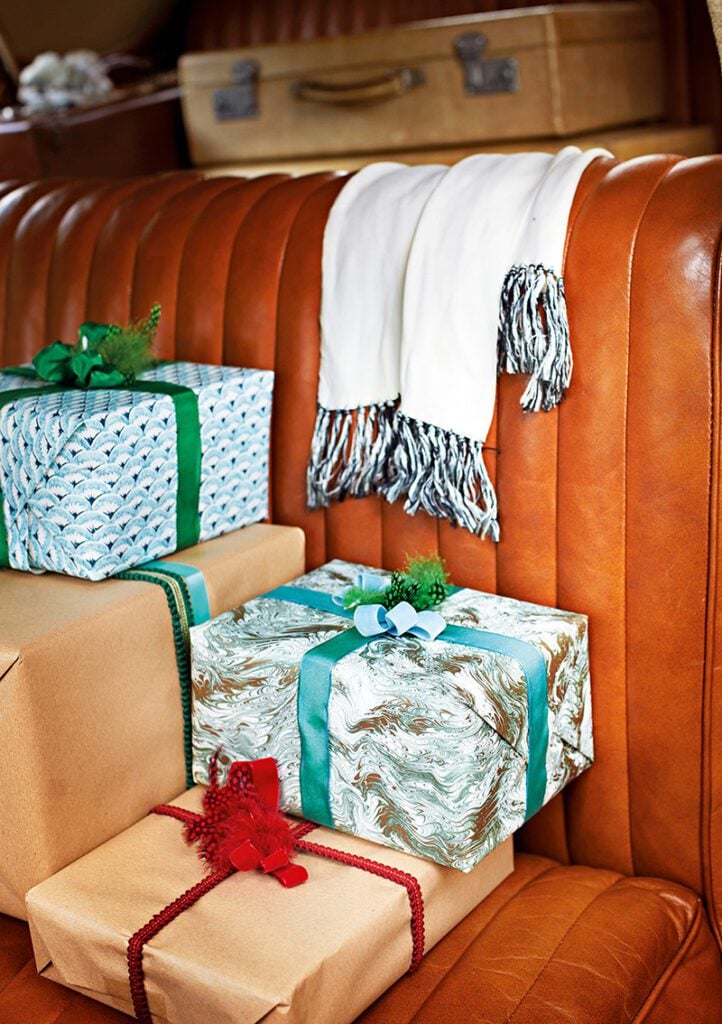
Ranked: The best to worst dishes to take on the road…
Simply the best: Homemade bread
Sturdy and stiff, a good loaf needs little more than a piece of baking paper covering it
Good idea: Anything frozen
Provided you have a cool bag with some ice packs inside, frozen food should stay rock-hard and survive the odd bit of knocking about.
Not bad: Traybakes
Keep them in the container they were cooked in and they should survive the drive.
Not great: Dressed salads
By the time you arrive you’ll have a slimy, bashed-about tub of sadness.
Bad idea: Pavlova
Unless you’re planning to turn it into an Eton mess en route, avoid!
The worst: Anything fried and hot
Crunchy exteriors will steam themselves soggy during the trip.
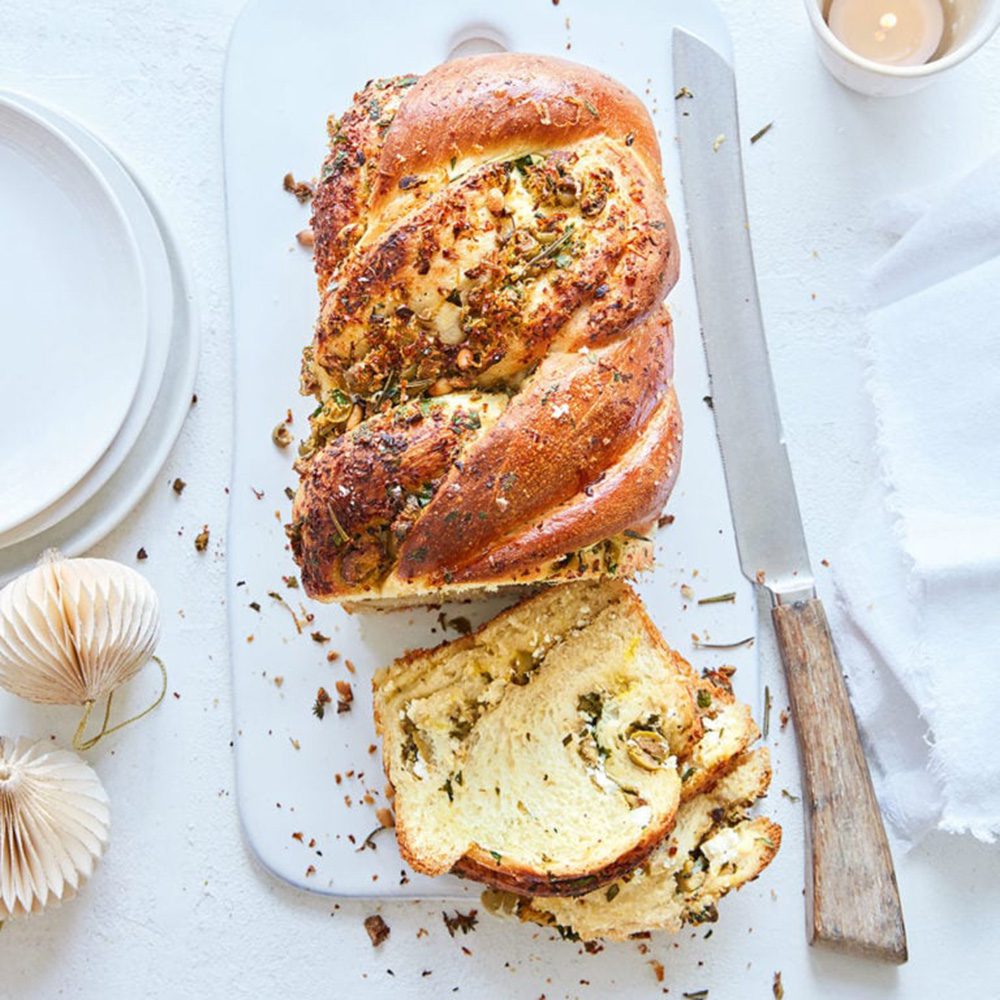
Need more inspiration? Try the cake recipe every travelling cook needs (it’s guaranteed to arrive intact). Get prepping for the holidays with our make-ahead Christmas recipes, or pick a dish to make and bring to the Boxing Day buffet (just remember the four golden rules above).
Subscribe to our magazine
Food stories, skills and tested recipes, straight to your door... Enjoy 5 issues for just £5 with our special introductory offer.
Subscribe
Unleash your inner chef
Looking for inspiration? Receive the latest recipes with our newsletter
